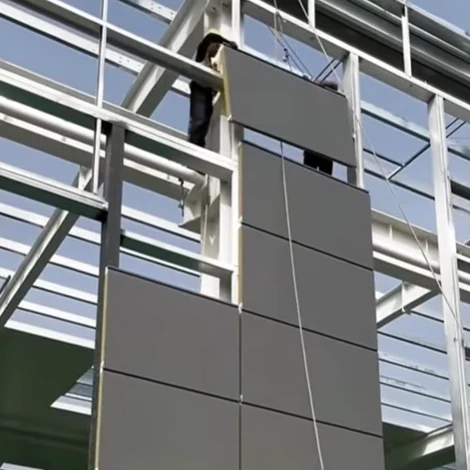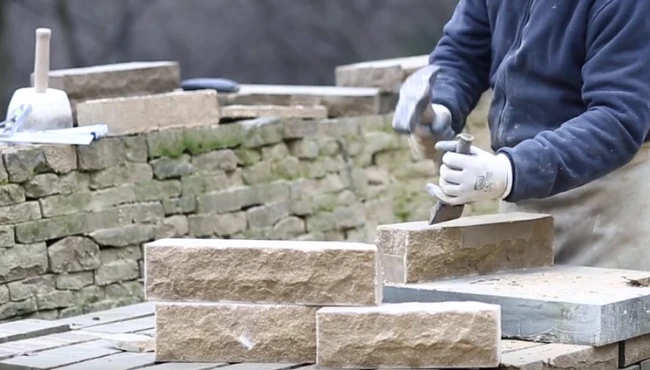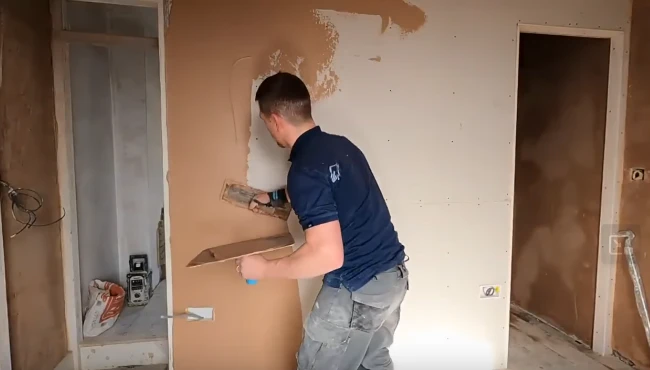What does a cladding installer do?
At the heart of the construction process, cladding Installers are responsible for applying protective layers to buildings, offering insulation and weather resistance. This can involve working with a variety of materials, to create a seamless and visually appealing exterior.
A cladding installer’s primary responsibilities include measuring and cutting materials, preparing surfaces, and expertly installing cladding systems to buildings. They work with a variety of materials, from traditional brick and stone to contemporary metals and composite panels.
Required skills
A mixture of practical skills and technical know-how is required to become a successful cladding installer. Essential skills include measuring accuracy, attention to detail, skill with hand tools and power tools and the ability to interpret technical drawings. Strong communication and teamwork skills are also vital, as façade installers often work closely with other construction professionals.

Qualifications
Gaining qualification is key to a successful career as a cladding installer. Many employers are looking for candidates with a level 2 NVQ or a level 3 NVQ qualification in cladding installation. In addition, possession of a blue CSCS or gold CSCS card is often required, demonstrating competence and knowledge in the field.
Benefits
Working as a cladding Installer comes with a number of benefits. The job offers the satisfaction of seeing tangible results of your work as buildings undergo a remarkable transformation under your skillful hands. In addition, working in the construction industry offers stability and numerous opportunities for career growth.
Challenges
Like any profession, cladding installers face challenges. Weather conditions can be unpredictable, which can cause difficulties for outdoor installations. Given the heights at which façade work often takes place, attention to safety is crucial. Adaptability and problem-solving skills are valuable qualities to overcome these challenges. Overcoming these challenges requires adaptability, problem-solving skills, resilience and a commitment to health and safety in the workplace.
Career path and progression
The career path for cladding installers can be varied. With experience, you can progress to supervisory or management positions and oversee entire cladding projects. Some may specialize further and focus on specific types of cladding materials or techniques. Continuous learning and staying on top of industry trends are key to success.
Statistics
Cladding installers in the UK* – Prognosis
Average Annual Increase
ARR**
SOURCE: CITB ” Labour Market Intelligence Report (2024 – 2028)”.
* These prognosis calculations assume constant ARR and growth rate without significant external disruptions.
** ARR – Annual Recruitment Requirement is a metric used to estimate the number of new workers needed annually to meet labour market demands in a specific industry, region, or occupation.
How much could you earn as a cladding installer
In the UK, cladding installers can earn a competitive salary. On average, entry-level positions start at £21,500 to £27,000 per year. With increasing experience and expertise, this figure can rise to £46,000 or more, particularly for those in supervisory roles (link) or with specialist skills.
*Information sourced from reputable recruitment sites and agencies, reflecting the latest job market insights and trends. Figures can vary based on factors such as specific job requirements, individual qualifications, and regional economic conditions. Additionally, self-employed professionals should account for expenses such as tools, materials, insurance, and transportation when calculating their net earnings.
Typical hours per week
Standard work hours per week
(Employed)
Working hours per week with overtime
(Employed and Self-employed)
The typical working week for a cladding fitter is between 40 and 45 hours, depending on the project schedule and deadlines. Due to the nature of the construction work, overtime may occasionally need to be worked to meet the schedule, but this can also m
Conclusion
In the dynamic world of construction, cladding installers play a crucial role in shaping the external identity of buildings. From the challenges they face to the opportunities for advancement, this profession offers a unique blend of craftsmanship and technical expertise.

